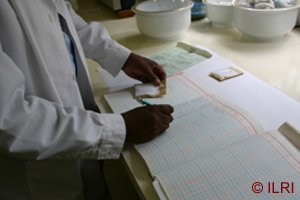Registration of forage legume genetic resources
Contributors to this page: ILRI, Ethiopia (Jean Hanson); ICARDA, Syria (Ahmed Amri, Kenneth Street, Ali Shehadeh, Natalya Rukhkyan); GRCTPL, Australia (Richard Snowball); Bioversity International/ILRI, Addis Ababa, Ethiopia (Alexandra Jorge).
Verifying accompanying documentation
A minimal documentation is essential to track germplasm material. Health and IPR certificates are very important for movement between countries. The following documents should accompany each consignment of plant germplasm:
It is also very important to check against material in the collection to avoid conserving duplicates and to have complete information on genebank accessions. This data enhances the value of the germplasm.
Verifying the consignment
It is important to inspect the material on arrival to verify its condition and to avoid the introduction of new pests and diseases. Only seeds that appear to be in good condition and have a high probability of being viable should be registered.
Checking the germplasm
- Check all packets against the list provided with the samples.
- If no list is provided or seeds do not correspond with the list, prepare a list and send to donor/provider for confirmation and obtaining the proper data.
- Check seeds for insect infestation or obvious signs of disease or damage during shipping.
- Isolate the infested/infected samples: destroy when quarantine diseases and/or insects are observed; otherwise clean the seeds before storage using freezing or fumigation to control insects.
- If possible, ask the donor to replace the sample.
Checking if the accession is already in the genebank
- Check the genebank database for duplication, i.e. if the sample is already conserved in the genebank.
- If it is, assign a new seed lot under the original accession number (of suspected duplicate). The ‘duplication’ will be verified later (at first planting and/or characterization).
- If the sample appears to be ‘original’, assign a unique accession number.
- Write the accession number clearly on the packet using a permanent marker.
- For each accession enter all passport data (plus any other information if provided) in the genebank database.
|
Registering new accessions (photo: ILRI) |
Recording information during registration
The following information must be recorded for each accession:
- Accession number (an ID number).
- Lot number (an ID number).
- Source (country and institute where the seeds came from).
- Date of registration (date of entry in the genebank).
- Passport data provided for accession.
Comments
- No comments found






Leave your comments
Post comment as a guest